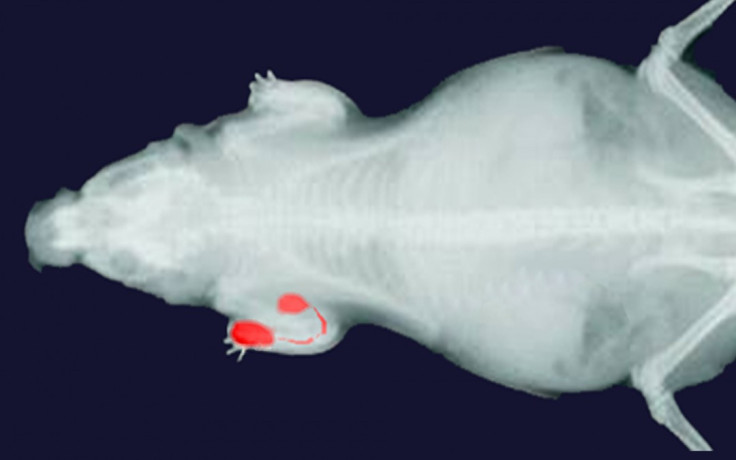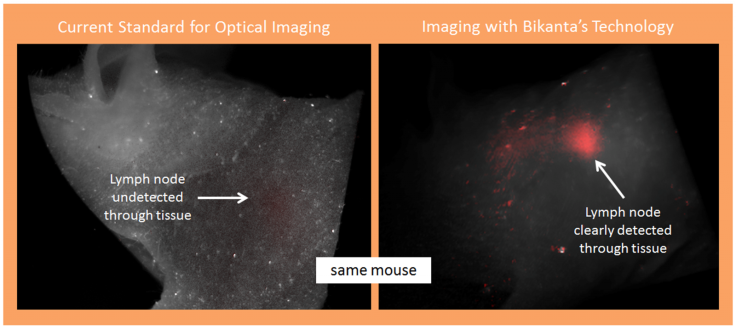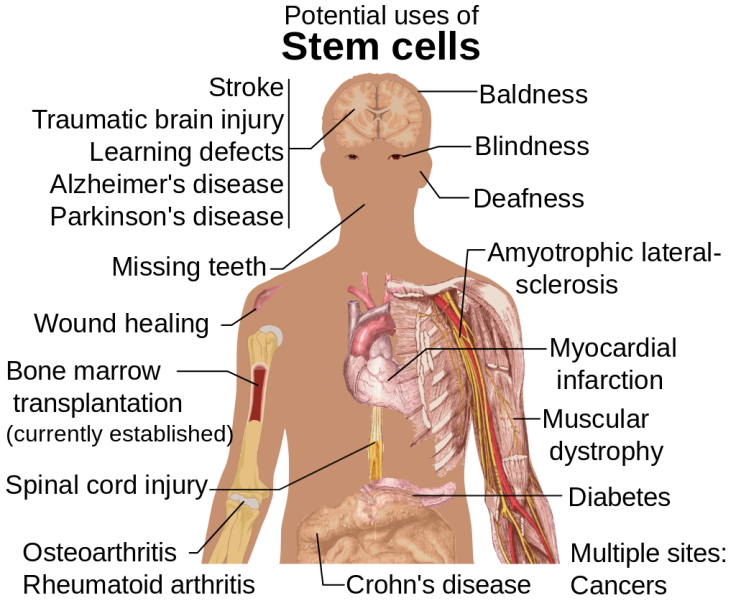Microscopic Diamonds Are Lighting The Way to Early Cancer Detection

Bikanta, a new biotech start-up, has developed an optical imaging technology that uses florescent nanodiamonds to screen for cancer. The technology could improve early cancer detection by spotting tumours before they spread to other parts of the body.
Nanodiamonds are grains of diamond dust that are 100,000 times narrower than a strand of hair.
This material has been known to nanotechnology researchers for a long time, but it has never been used in medical applications due to its instability, until now.
Dr Ambika Bumb, Bikanta's chief executive, and inventor of the technology, found a way to stabilise the nanodiamonds in 2012 while working on post-doctoral studies at the US National Cancer Institute and National Heart, Lung and Blood Institute.
She realised that by attaching a nanodiamond to one end of a strand of DNA, it would be possible to track how the DNA interacted with its environment.
Unhappy with the limitations of current cancer detection optical imaging systems, in 2013 she decided to develop a new system using the nanodiamonds.
Miniature flashlights searching for cancer
"The analogy is to think of nanodiamonds as really tiny flashlights, with infinite battery life, that we use to direct and shed light on different biological structures inside or outside the body," Bumb tells IBTimes UK.
"You can attach a number of different targeting agents to the surface of the nanodiamonds. Every cell in the body has a unique receptor showing what kind of cell it is, and they bind [only] with very specific targeting agents – antibodies.
"We can tailor these nanodiamonds to specifically hone into various types of cancers or skin diseases."
At the moment, it is impossible to see cancers when they are small and still forming, particularly if cancer cells break away and spread to another part of the body, where they grow into new tumours: a process called metastasis.
Optical-imaging dyes can be used to locate cancerous cells, but the dyed cells can be hard to see in digital images of the affected tissues. Nanodiamonds, by contrast, have shown a 100-fold improvement over conventional optical imaging methods.
Detecting lymph nodes hidden in today's imaging systems
Currently doctors determine if a cancer is spreading by draining nearby lymph nodes over a period of two to three weeks. They take 10 to 15 samples from a patient, and then study them under a microscope.
This invasive procedure is very painful and has side effects, plus it can only diagnose a patient – not treat them.

"We wanted to see if the targeting agent can detect sentinel (i.e. primary draining) lymph nodes that could not be detected by today's conventional technology," explains Bumb.
"We injected nanodiamonds into the footpad of a mouse, and through what's called intradermal pressure, the particles were small enough to pass into the lymphatic vessels and to the sentinel lymph node."
Bumb and her team were able to see the lymph node in the mouse clearly in their optical imaging system. The same lymph node would not have been visible using today's imaging systems.
Their research is published in the journal Biomedical Optics Express.
Implications for stem cell research
Apart from detecting cancer cells, nanodiamonds can also be used to detect cancer stem cells and regular, healthy stem cells, which has huge implications for stem cell research.

"Current research says that there are certain markers identified for cancer stem cells, such as CD44 (breast cancer), and CD47 and dopamine receptors (leukemia)," says Dr Terry Scahlos, Bikanta's chief scientific officer.
"We could tag these stem cells with nanodiamonds, inject them into mice and see where they go, how they develop. Where do the cells end up? How do cells migrate in the body? We need to understand how they behave."
In patients who suffer from diabetes, there is usually damage to their pancreas, which causes the patient to lack insulin-producing cells.
If physicians could understand how stem cells work when repairing damaged tissue, then they could be used to treat diabetes by creating new insulin-producing cells that could be injected into a pancreas.
Looking to the future
Biktana's research is at the pre-clinical stage, and the start-up's first job is to create a sustainable business model, but it is already picking up accolades for its invention.
Bikanta has won the eleventh annual Business Plan Competition at the Silicon Valley Boomer Venture Summit 2014, secured funding from start-up accelerator Y Combinator, and was a semi-finalist in the OneStart Americas 2014 competition for young bio-entrepreneurs with early-stage start-ups.
"We went through Y Combinator through the summer and are now in the process of ramping up the company and setting up a manufacturing facility," says Bumb.
"The National Institutes of Health has licensed the technology to Bikanta, and I owe much of what I know to the training I received from the NIH."
© Copyright IBTimes 2025. All rights reserved.




















